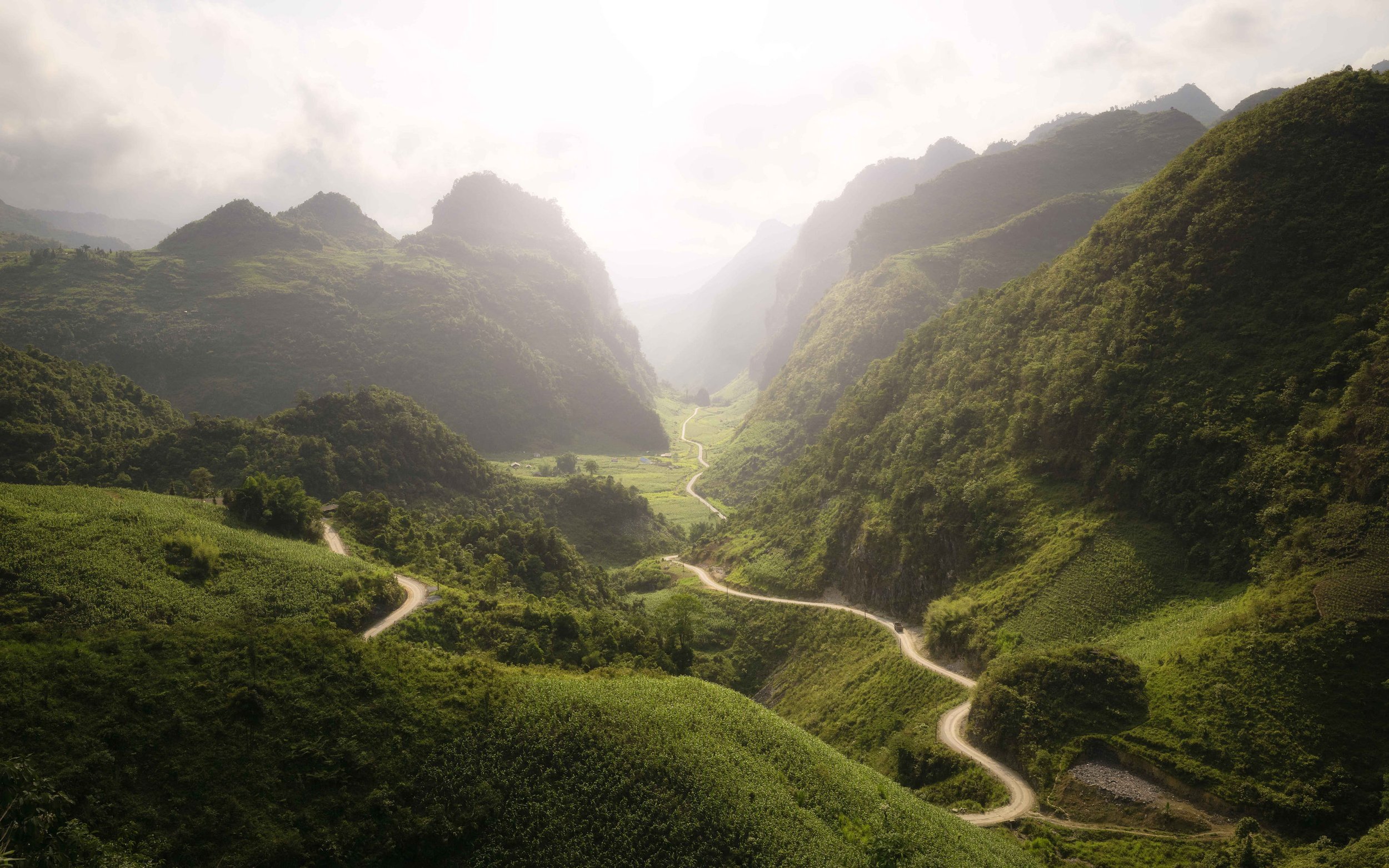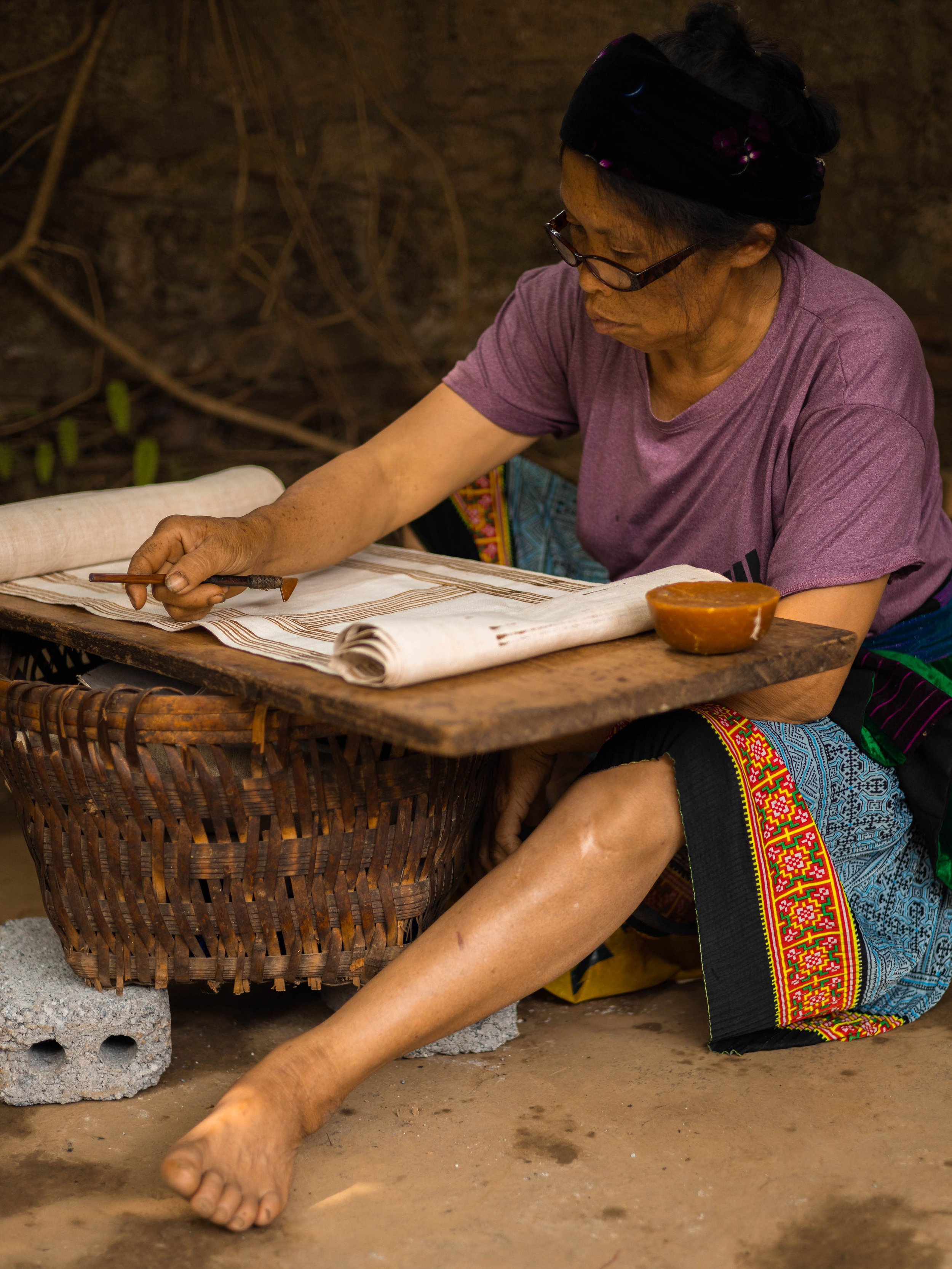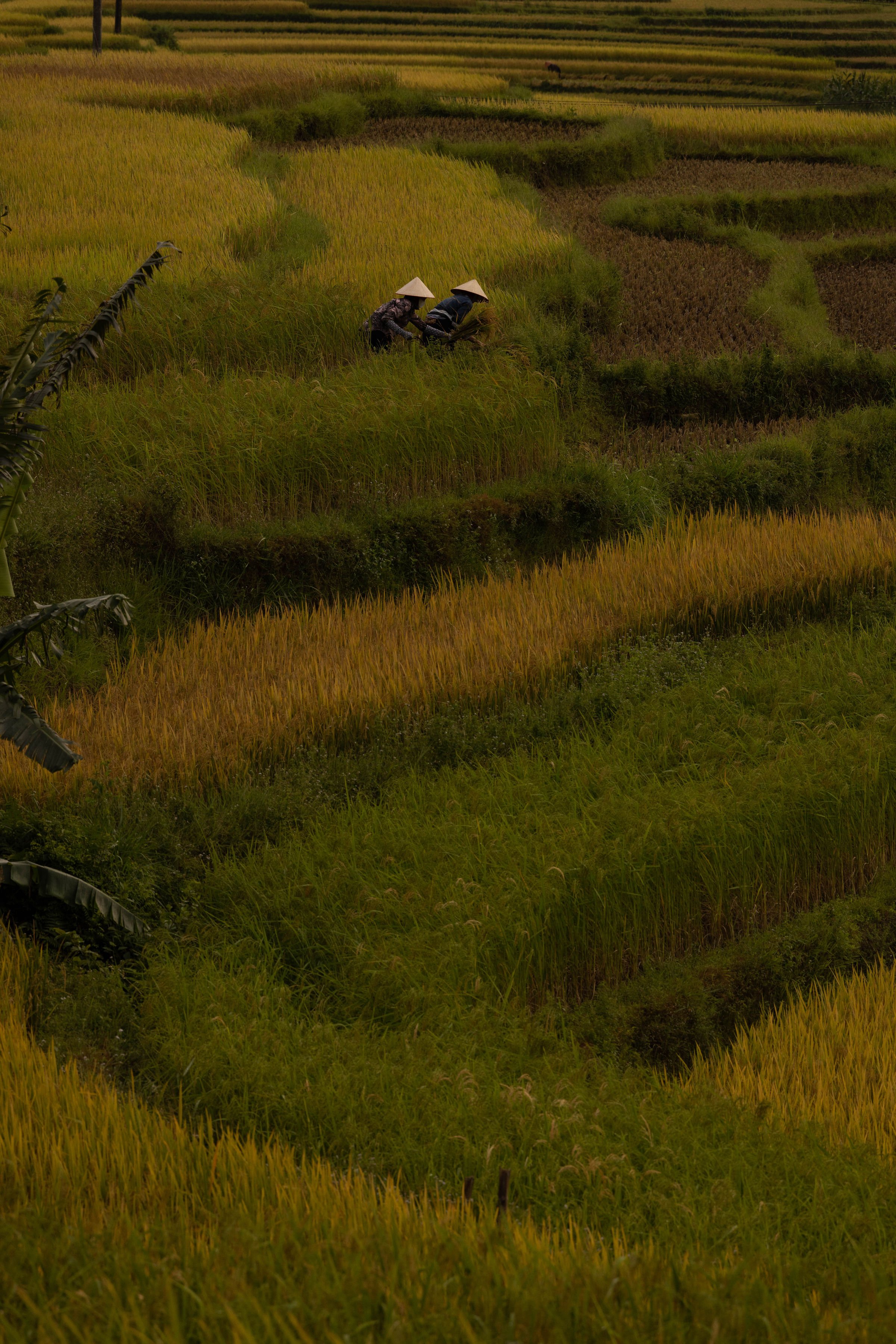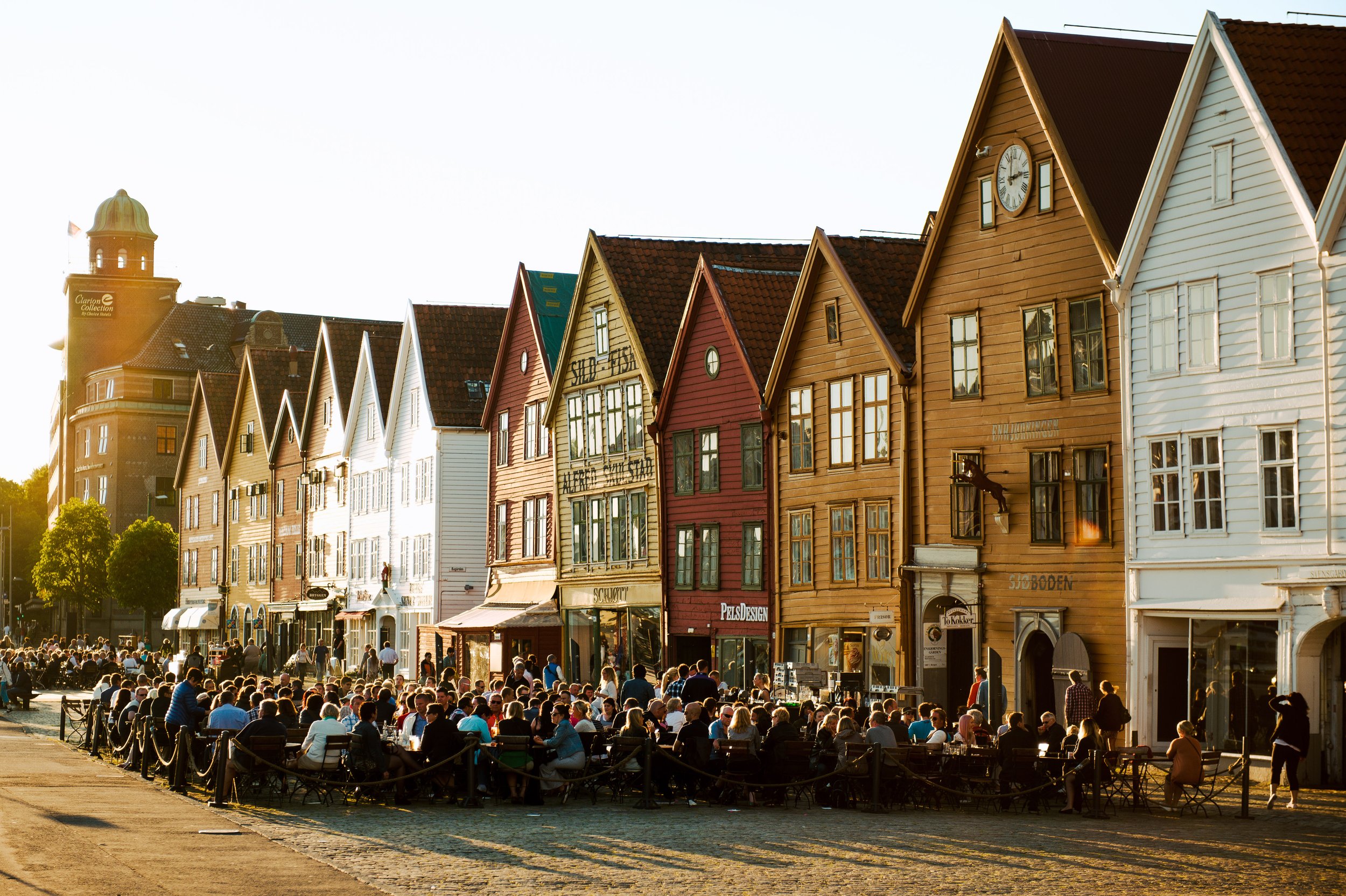The Happiness Road

Exploring The Happiness Road and the Ha Giang province in Vietnam
Explorando el Camino de la Felicidad y la provincia de Ha Giang en Vietnam
Words and images by/palabras e imágenes por Sam Bugas
It’s been 57 years since the Ha Giang loop, otherwise known as the Happiness Road, was first carved out of the Karst mountains spanning the North of Vietnam. The many communities inhabiting the Ha Giang province, though, date back far longer than the road itself.
Han pasado 57 años desde que el bucle de Ha Giang, también conocido como el Camino de la Felicidad, fue tallado por primera vez en las montañas Karst que se extienden por el norte de Vietnam. Sin embargo, las numerosas comunidades que habitan en la provincia de Ha Giang datan de mucho antes que la carretera misma.
They live with the land in such a way that the road is more convenience than necessity. Traveling along, and visiting the many different villages and towns, reveals a conversation between person and place that is as compelling as anywhere on Earth.
Viven con la tierra de tal manera que el camino es más comodidad que necesidad. Viajar y visitar los diferentes pueblos y ciudades revela una conversación entre la persona y el lugar que es tan convincente como en cualquier lugar de la Tierra.
The Ha Giang Province is a symbol of what total amalgamation with the landscape looks like. Tracing from mountain top to valley floor, making available the many different remote communities, a pattern emerges for those moving along the Ha Giang Loop to see: This land is anything but simple to navigate, with jungles, immense cave systems, intermittent monsoons, and sheer cliffs acting like great barriers between mountains. Yet these communities remain, many fully reliant on their land, and some with zero need for import, income, or access to land beyond their own.
La provincia de Ha Giang es un símbolo de la fusión total con el paisaje. Siguiendo desde la cima de la montaña hasta el fondo del valle, poniendo a disposición las diferentes comunidades remotas, surge un patrón para que lo vean quienes se desplazan a lo largo del bucle de Ha Giang: esta tierra es cualquier cosa menos fácil de navegar, con selvas, inmensos sistemas de cuevas, monzones intermitentes y acantilados escarpados que actúan como grandes barreras entre montañas. Sin embargo, estas comunidades permanecen, muchas de ellas totalmente dependientes de su tierra, y algunas sin necesidad de importar, ingresos o acceso a tierras más allá de la suya.
Take the community of Black Dao people, living in Nam Dam. The men, women, and children when studies allow, are at work cultivating rice, corn, livestock, and more. Gaze in any direction, and you’ll see thousand foot mountains covered on every accessible inch with corn and wheat.
Tomemos como ejemplo a la comunidad de personas Black Dao que viven en Nam Dam. Los hombres, mujeres y niños cuando los estudios lo permiten, están trabajando en el cultivo de arroz, maíz, ganado y más. Mire en cualquier dirección y verá montañas de miles de pies cubiertas en cada pulgada accesible con maíz y trigo.
Squint and you’ll see locals at work, tending to their cliffside livelihoods. Not unlike their persistent crops, some here only rely on the ground below them; no income, no trade, and a fully intentional lifestyle.
Entrecierra los ojos y verás a los lugareños en el trabajo, atendiendo a sus medios de vida en los acantilados. Al igual que sus cultivos persistentes, algunos aquí solo dependen del suelo debajo de ellos; sin ingresos, sin comercio y con un estilo de vida completamente intencional.
Less than an hour down the road, in the town of Lung Tam, H’Mong women work with hemp to create fabric that is used to make high end clothing, blankets, and other items. The processes they use are refined and perfected, fueled by a pride in their craft, and shown through the women’s hands as they work with extreme dexterity; some of which are more than 90 years old.
A menos de una hora por la carretera, en la ciudad de Lung Tam, las mujeres H'Mong trabajan con cáñamo para crear telas que se utilizan para confeccionar ropa de alta calidad, mantas y otros artículos. Los procesos que utilizan son refinados y perfeccionados, impulsados por el orgullo de su oficio, y se muestran a través de las manos de las mujeres mientras trabajan con extrema destreza; algunos de los cuales tienen más de 90 años.
Another day of travel, and within throwing distance of the border with China, there is an unforgettable place. Situated near Thien Huong, there are several sacred Banyan trees that watch over Ha Giang. Their age is unknown, and it’s rumored they’ve stood far beyond even the oldest generations known to the area. They are sometimes known as the mother trees, and once a year, people from all over the region come to to ask for successful cultivation during the year to come. Standing at their bases where long stilted roots reach out like a web, it’s not hard to feel their immensity, and understand why so many look to them with hope.
Otro día de viaje, ya tiro de piedra de la frontera con China, hay un lugar inolvidable. Situado cerca de Thien Huong, hay varios árboles sagrados de Banyan que vigilan a Ha Giang. Se desconoce su edad, y se rumorea que han superado incluso a las generaciones más antiguas conocidas en la zona. A veces se les conoce como los árboles madre, y una vez al año, gente de toda la región viene a pedir un cultivo exitoso durante el año siguiente. De pie en sus bases, donde largas raíces sobre pilotes se extienden como una red, no es difícil sentir su inmensidad y comprender por qué tantos los miran con esperanza.
Just outside the town of Ha Giang sits Ha Thanh Village. Rice fields shimmer under morning heat, guarded by a horizon of mountains. Each day as dawn breaks, and cool nights simmer into daytime heat, the village moves from stilted homes out into the fields, harvesting rice as fast as it will grow, before drying it on the village roads. There is serenity in the air as each villager sets out to work, moving swiftly along cobbled aqueducts, through the array of terraces.
A las afueras de la ciudad de Ha Giang se encuentra el pueblo de Ha Thanh. Los campos de arroz brillan bajo el calor de la mañana, protegidos por un horizonte de montañas. Cada día, cuando amanece y las noches frescas se convierten en calor diurno, la aldea se muda de sus casas sobre pilotes a los campos, cosechando arroz tan rápido como crece, antes de secarlo en los caminos de la aldea. Hay serenidad en el aire cuando cada aldeano se pone a trabajar, moviéndose rápidamente a lo largo de acueductos empedrados, a través de la serie de terrazas.
Experiencing the Ha Giang Province along the Happiness Road is an opportunity to witness human capability when fueled by a love, and reliance on a landscape. There are dozens of different minority communities, all living in harmony with each other and their land, and all with the pursuit of successful habitation in one of the most beautiful regions on earth.
Experimentar la provincia de Ha Giang a lo largo del Camino de la Felicidad es una oportunidad para presenciar la capacidad humana cuando es alimentada por el amor y la confianza en un paisaje. Hay docenas de diferentes comunidades minoritarias, todas viviendo en armonía entre sí y con su tierra, y todas con la búsqueda de una habitación exitosa en una de las regiones más hermosas de la tierra.







































